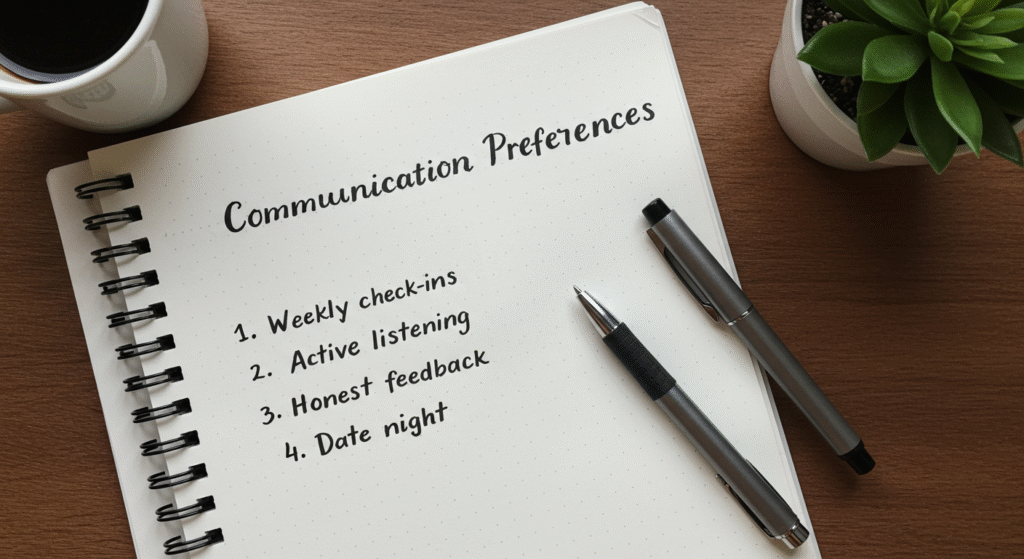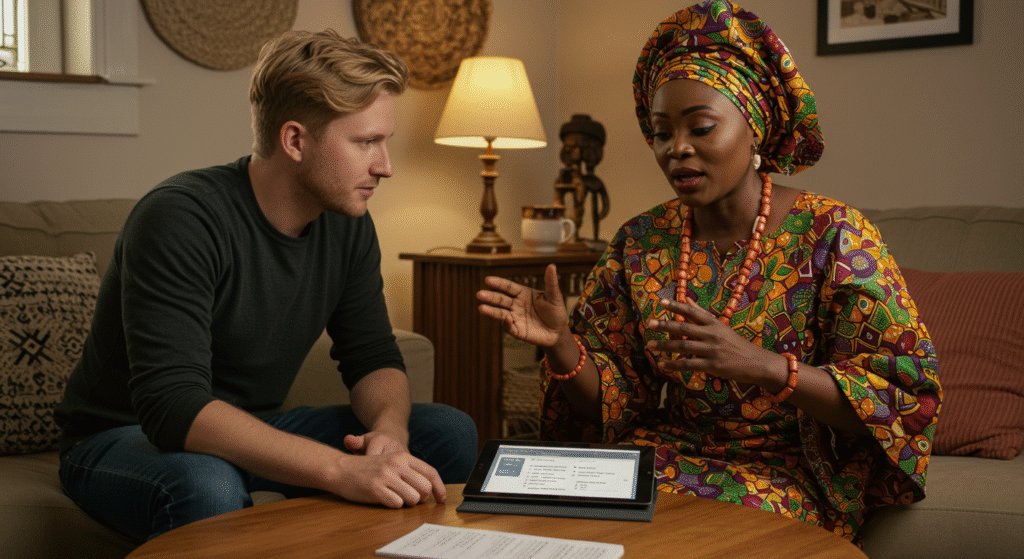When Love Speaks Two Languages: Overcoming Communication Gaps in a Cross-Cultural Marriage

Love may be universal, but language is not. Effective communication in cross-cultural marriage can be challenging yet rewarding.
In a world where more and more couples come from different cultural and linguistic backgrounds, many marriages are built on a foundation of love that transcends words. But that doesn’t mean communication is always easy. In fact, cross-cultural marriages often face one of the most overlooked challenges—the struggle to truly understand each other when English (or any common language) isn’t the native tongue for one or both spouses.
Even when love is strong, it’s easy for misunderstandings to arise. A tone of voice may sound harsh when it’s not meant to. A joke might not translate. A word might be missing the emotional nuance the other partner needs to hear. The result? Frustration, confusion, and sometimes unintentional hurt.
But here’s the truth: communication gaps don’t have to become permanent cracks in your relationship. With intentional effort, compassion, and a few proven strategies, couples who speak different first languages can experience deep, rich, emotionally safe conversations—and a thriving marriage.
Let’s explore how.
1. Understanding That Communication Is More Than Words
 Before we jump into tools and techniques, let’s reframe how we think about communication.
Before we jump into tools and techniques, let’s reframe how we think about communication.
Many people assume communication is just about language. But in marriage, communication is emotional. It’s about tone, facial expression, body language, timing, and even silence. In fact, studies show that over 90% of communication is non-verbal. So even if your grammar isn’t perfect—or your spouse occasionally stumbles over a word—you can still have powerful, connected conversations.
The key is not perfection—it’s presence.
When both spouses are emotionally tuned in, misunderstandings are easier to navigate. And when you understand that your partner’s struggle to communicate isn’t a lack of care but a language barrier, it becomes easier to give grace.
2. Embrace the Awkwardness (And Laugh Through It)
 Let’s face it: if one of you is translating thoughts in your head before speaking, conversations will feel slower. Sometimes what comes out won’t make much sense. Words might get mixed up. Idioms might be misunderstood. And yes—it can be funny.
Let’s face it: if one of you is translating thoughts in your head before speaking, conversations will feel slower. Sometimes what comes out won’t make much sense. Words might get mixed up. Idioms might be misunderstood. And yes—it can be funny.
Learn to laugh together.
Humor can be your secret weapon. Instead of feeling embarrassed when your spouse says “I’m hungry for your mind” instead of “I admire your intelligence,” embrace it. Let it become an inside joke. Create a culture of safety around mistakes so neither of you feels pressure to be perfect.
A marriage that can laugh is a marriage that can last.
3. Learn Each Other’s Language—Even Just a Little
 You don’t have to become fluent in each other’s first language overnight. But making an effort to learn even a few phrases or cultural expressions sends a powerful message: “I care about your world.”
You don’t have to become fluent in each other’s first language overnight. But making an effort to learn even a few phrases or cultural expressions sends a powerful message: “I care about your world.”
Even saying “I love you” or “Thank you” in your partner’s native tongue can be a game-changer. It shows you’re willing to step into their shoes—and that’s the foundation of emotional intimacy.
Some couples make it a shared goal to learn one new phrase a week from each other’s language. Others turn it into a fun game or bedtime ritual. What matters isn’t mastery—it’s the heart behind it.
Love is spelled E-F-F-O-R-T.
4. Use Tools That Support Translation and Understanding
 Thanks to technology, there are more resources than ever to help couples bridge the language gap:
Thanks to technology, there are more resources than ever to help couples bridge the language gap:
- Translation Apps like Google Translate or DeepL can help in real-time.
- Language learning platforms like Duolingo or Babbel allow each partner to learn at their own pace.
- Phrasebooks and flashcards can be kept on hand during tough conversations.
Pro Tip: When discussing sensitive issues (like money, parenting, or intimacy), try writing your thoughts first in your preferred language, then translating them into your shared language. This gives you time to think, ensures clarity, and prevents misunderstandings.
5. Practice Active Listening—It’s a Game Changer
 When language isn’t fluent, it’s tempting to jump in and “fix” what your spouse is trying to say. But real communication starts with listening to understand, not listening to respond.
When language isn’t fluent, it’s tempting to jump in and “fix” what your spouse is trying to say. But real communication starts with listening to understand, not listening to respond.
Here’s how to practice active listening:
- Make eye contact.
- Repeat back what you think you heard (e.g., “Are you saying you felt ignored when I didn’t respond?”).
- Ask clarifying questions gently.
- Be patient and resist the urge to interrupt.
Active listening is an act of love—and it helps slow the conversation down in a way that promotes mutual understanding.
6. Create Safe Phrases for Frustration
 All couples argue—but when there’s a language gap, those arguments can spiral fast due to simple misunderstandings.
All couples argue—but when there’s a language gap, those arguments can spiral fast due to simple misunderstandings.
One powerful technique is creating “safe phrases” to use when things get tense. These are neutral, pre-agreed sentences like:
- “Can we take a break and come back to this?”
- “I want to understand, but I need help.”
- “Let’s pause. I love you.”
These phrases become emotional life rafts when the waves of conflict get too high. They help you protect the connection while you work through the confusion.
7. Learn About Each Other’s Communication Culture
 Beyond language, each culture has its own way of expressing emotions. In some cultures, directness is respected. In others, it’s seen as rude. Some families yell to show passion; others go silent to avoid shame.
Beyond language, each culture has its own way of expressing emotions. In some cultures, directness is respected. In others, it’s seen as rude. Some families yell to show passion; others go silent to avoid shame.
Understanding these differences can prevent major heartache.
Have a conversation about your “communication upbringing.” Ask questions like:
- Was it okay to express anger where you grew up?
- How did your parents handle conflict?
- What feels disrespectful to you during an argument?
Knowing your spouse’s emotional culture is just as important as learning their spoken language.
8. Celebrate Progress, Not Perfection
 Every time you successfully navigate a tough conversation, celebrate it. Every time your spouse makes an effort to learn a new word in your language, celebrate it. Every time you avoid an argument through compassion and clarity—celebrate it.
Every time you successfully navigate a tough conversation, celebrate it. Every time your spouse makes an effort to learn a new word in your language, celebrate it. Every time you avoid an argument through compassion and clarity—celebrate it.
Progress is powerful.
Cross-cultural couples are some of the strongest because they’ve had to build bridges where others already had roads. The communication work you do now makes your foundation deeper, your connection stronger, and your love more resilient.
Final Thoughts: Love Beyond Language
 If you and your spouse are navigating a language barrier, know this:
If you and your spouse are navigating a language barrier, know this:
You are not alone.
Many couples face these challenges. And many go on to build marriages filled with laughter, clarity, passion, and peace. Communication isn’t about speaking the same language—it’s about fighting to be understood and choosing to listen, again and again.
Love may not always be fluent, but it always has a voice.
💬 Conversation Starter Questions (for Couples to Try Tonight):
- What’s one word in your language that doesn’t translate well—but you wish I understood?
- How can I be more patient when we have a misunderstanding?
- What part of our communication makes you feel the most loved?

